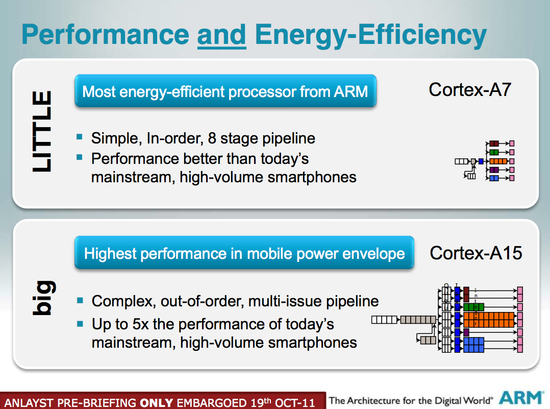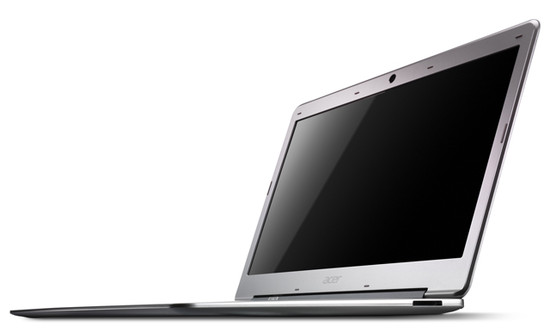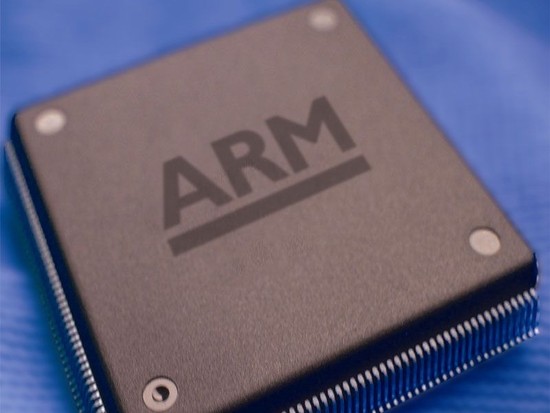ARM has already announced that it has a 64-bit architecture coming, but that it is still a few years into the future for retail products. This year it will release the first two cores with 64-bit support for licensing; Atlas and Apollo.
A tragic fact is that ARM will have a hard time standing up while stuck at the 32-bit level. The good thing is the increase in demand for smartphones and tablets, which resulted in a record quarter in Q4 2011. The code name of the product that will really put ARM on the map outisde the mobile sphere is now out.
ARM talks about the big.LITTLE concept, which builds on two energy efficieny and weaker cores that handle most work, while two stronger and more powerful cores activate when needed. Similar to how NVIDIA Tegra 3, with its 5th companion cores works. The company has revealed that it will use the same concept with its graphics architectures.
 |
 |
The two coming graphics architectures Skrymir and Tyr will be available for license in 2012, and most likely the first to work in a big.LITTLE configuration (Tyr = big, Skrymir = LITTLE?). Both Skrymir and Tyr are designed for high efficiency and performance.
The perhaps most interesting are the first 64-bit processors from ARM in the Cortex-A series. Atlas and Apollo will be built on the ARMv8 architecture (Atlas = big, Apollo = LITTLE?). More information on the graphics architectures Skrymir, Tyr and processor architectures Apollo and Atlas will be made official in 2012. According to ARM VP Warren East, Atlas and Apollo will go into mass production in 2014 at 20nm, at both GlobalFoundries and TSMC. With circuit development times in mind we would guess the same applies to the graphics architectures Skrymir and Tyr.
 ARM – a force to reckon with among PCs in 2014?
ARM – a force to reckon with among PCs in 2014?
Apollo and Atlas will be the first processor architectures with 64-bit support and will be available for most devices. Except from working as big.LITTLE, they will be scalable. This means both will find their way into smartphones and tablets, but also PCs and servers.
Besides performance alternatives in the upper segment it also has Flycatcher coming in the Cortex-M series. Cortex-M is used in everything from sensors, remotes, dish washers and simpler retail products. This will be the most energy efficient and smallest circuit it has to offer, thanks to newer manufacturing technologies.





















Leave a Reply